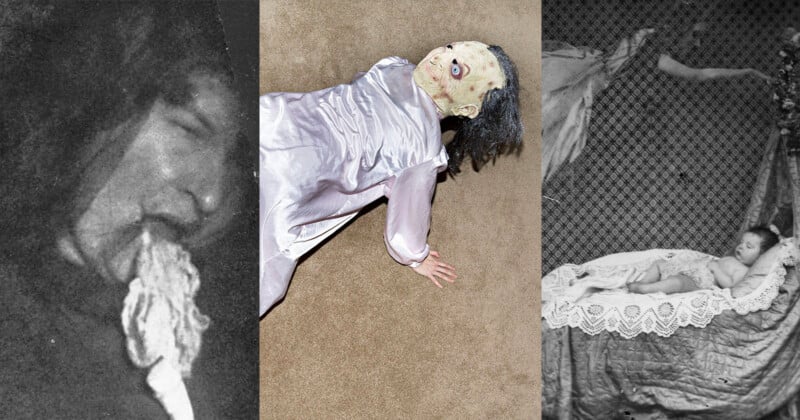New Exhibit Explores the Phenomenon of Paranormal Photography

With the spooky season in full swing, a new exhibition exploring the origins of paranormal and spiritual photography has been unveiled by Getty Images.
Entitled Ghost in the Machine, the exhibit maps the origins of spirit photography displaying some never-before-released photographs from the Hulton Archive.
The historic images from the 19th and early 20th centuries put a lens on the paranormal, showcasing how early photographers used double exposure and physical manipulation to conjure invisible realms.
The exhibit contains photographs showing a table apparently moving on its own at a seance in Paris. Meanwhile, in another seance, a musical instrument floats in the air.




One of the spirit images plays on Charles Dickens’ A Christmas Carol as a ghost appears at the stroke of midnight wrapped in chains in front of a terrified man.
“For as long as technologies have existed, we’ve projected magical properties onto them,” writes the press release from Getty.
“In the 19th century, creative pioneers used spirit photography as a medium for communicating with invisible realms. Art allows us to give form to new realities. Now, as we approach Halloween, the otherworldly is all around us. Ghost in the Machine, the first physical‑digital project from Candy Digital and Getty Images, traces the impact of early paranormal photography on culture today.”


Modern photographers also contributed to the exhibition: Jacob Haupt, Robert Hickerson, Rachel Stern, and Elyse Fulcher all produced horror movie-inspired images for a part of the exhibit named Nightmare Logic.




Getty is holding the exhibition along with Candy Digital, the two entities are “exploring the power of blockchain technology” together. The artworks are for sale in digital-only form for $75 and can be bought as a framed print for $225. For more information, head to Candy’s website.
Update 10/30: A couple of photographers names were added who are involved with the exhibit.